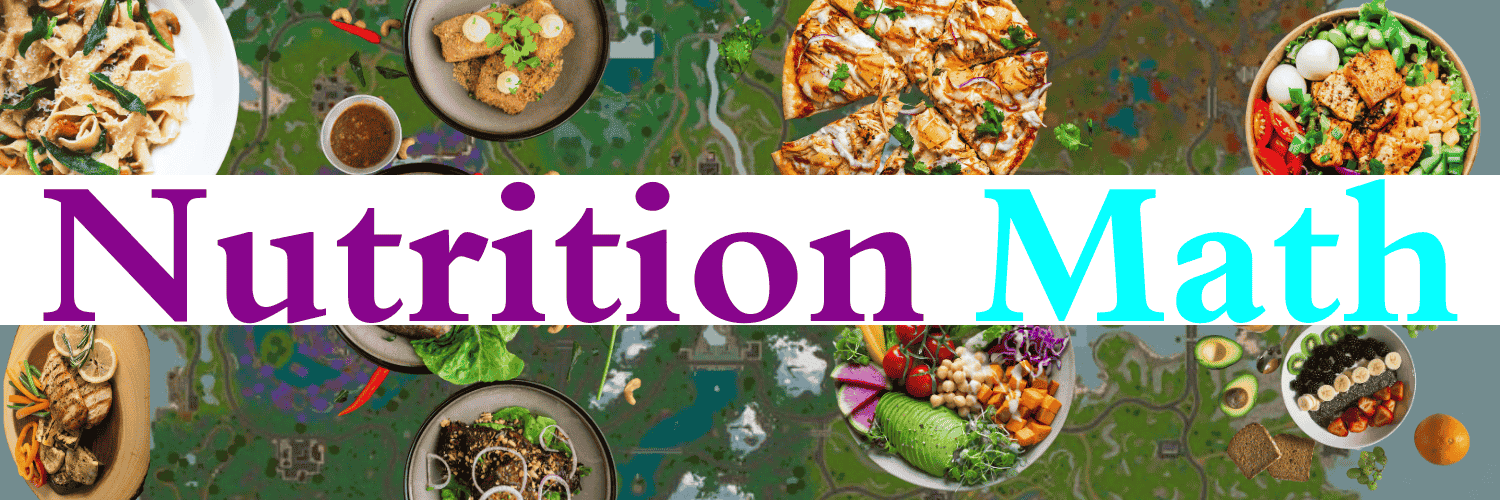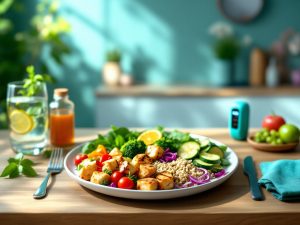Athletes push their bodies to the limit, and nutrition is the cornerstone of achieving and sustaining peak performance. Whether you’re a marathon runner, a weightlifter, or a team sport enthusiast, a strategic diet optimizes energy, accelerates recovery, and boosts endurance. This comprehensive guide dives deep into macronutrients, pre- and post-workout nutrition, hydration tactics, supplements, meal planning, and cutting-edge trends for 2025—empowering you to fuel like a champion.
Macronutrient Breakdown for Athletes
Macronutrients—carbohydrates, proteins, and fats—are the pillars of an athlete’s diet, each serving distinct yet interconnected roles. Understanding their functions and sourcing them wisely can transform your performance.
- Carbohydrates: The body’s go-to energy source, stored as glycogen in muscles and the liver, powering high-intensity efforts and endurance feats, as detailed by the Mayo Clinic.
Sources: Whole grains (quinoa, brown rice), fruits (bananas, berries), starchy vegetables (sweet potatoes, beets), oats, whole-grain pasta. - Proteins: Essential for repairing microtears in muscle fibers and fostering growth after grueling sessions, per Healthline.
Sources: Lean meats (chicken breast, turkey), fish (salmon, tuna), eggs, dairy (Greek yogurt, cottage cheese), plant-based options (lentils, chickpeas, tempeh, tofu). - Fats: A dense energy reserve for prolonged activities, also aiding hormone production like testosterone for strength gains, according to the Academy of Nutrition and Dietetics.
Sources: Nuts (almonds, walnuts), seeds (chia, flax), olive oil, avocados, fatty fish (mackerel, sardines).
Pro Tip: Start with a macronutrient split of 50-60% carbohydrates, 20-30% protein, and 15-25% fats. Adjust based on training demands—more carbs for endurance, more protein for strength—tracking with MyFitnessPal.
Pre-Workout Nutrition
Timing
Fuel up 2-3 hours before training with a balanced meal for sustained energy, or grab a quick snack 30-60 minutes prior for an immediate boost. Timing hinges on digestion—larger meals need more time.
Why These Foods?
Carbs provide quick glycogen access, protein curbs muscle breakdown mid-workout, and fats offer a steady energy drip for longer sessions.
Recommended Foods
- Carbohydrates: Whole wheat toast with almond butter, oatmeal with berries and honey, a banana with yogurt drizzle, or rice cakes with jam.
- Proteins: Grilled chicken strips, hard-boiled eggs, Greek yogurt with chia seeds, or a protein shake with spinach and berries.
- Fats: A handful of mixed nuts, flaxseed sprinkled on oatmeal, half an avocado on toast, or a spoonful of peanut butter.
Hydration
Begin hydration early—drink 500-600 ml of water 2-3 hours before, followed by 250-300 ml 10-20 minutes prior. Pre-hydration primes your body for sweat loss.
Post-Workout Nutrition
Timing
Strike within the 30-60 minute “anabolic window” post-exercise to replenish glycogen and kickstart muscle repair, as evidenced by this NCBI study.
Why These Foods?
Carbs restore depleted glycogen stores, protein shuttles amino acids to damaged muscles, and fluids correct dehydration from sweat.
Recommended Foods
- Carbohydrates: Brown rice with roasted veggies, baked sweet potato wedges, whole wheat pita with hummus, or post-workout fruits (pineapple, watermelon, mango).
- Proteins: Scrambled eggs with spinach, grilled salmon fillet, whey protein shake with almond milk, or cottage cheese with berries.
- Fats: Avocado slices on toast, a handful of trail mix (nuts and dried fruit), or olive oil-drizzled veggies.
Hydration
Replenish with 500-700 ml of water per pound of body weight lost during exercise. For faster recovery, try coconut water or electrolyte drinks like those from Gatorade.
Hydration Strategies
Dehydration slashes strength by up to 10%, endurance by 20%, and focus entirely. Stay ahead with these tactics:
- Daily Baseline: Aim for 2.5-3.5 liters of water daily, scaling up with training intensity.
- During Exercise: Sip 200-300 ml every 15-20 minutes—consider a hydration pack for long runs.
- Monitoring: Pale yellow urine signals optimal hydration; dark yellow means drink more.
- Electrolytes: Replenish sodium, potassium, and magnesium with coconut water, sports drinks, or tablets like those offered by Nuun.
Supplements for Athletes
Whole foods reign supreme, but supplements can bridge gaps and boost performance when used smartly.
- Whey Protein: Rapidly digested for muscle repair; take 20-30g post-workout, as supported by Examine.
- BCAAs: Branched-chain amino acids cut soreness and fuel endurance; 5-10g during or post-workout.
- Creatine Monohydrate: Boosts strength and power; 3-5g daily, ideally with carbs, per Muscle & Strength.
- Omega-3 Fish Oil: Fights inflammation and supports joints; 1-2g daily with meals.
- Caffeine: Enhances focus and stamina; 3-6 mg/kg body weight 30-60 minutes pre-workout (e.g., coffee or pre-workout blends).
- Electrolyte Powders: Prevents cramps in heat or long sessions; mix into water as needed.
Meal Planning for Athletes
Consistency fuels success. Align meals with your training rhythm and goals using this framework:
| Meal Type | Timing | Example Meal |
|---|---|---|
| Breakfast | 2-3 hours pre-workout | Oatmeal with almond butter, banana, chia seeds, and a splash of almond milk |
| Pre-Workout Snack | 30-60 min pre-workout | Greek yogurt with honey, granola, and a few walnuts |
| Post-Workout Meal | 30-60 min post-workout | Grilled chicken breast, quinoa, steamed broccoli, and a drizzle of olive oil |
| Lunch | Midday recovery | Turkey wrap with whole-grain tortilla, avocado, spinach, and hummus |
| Evening Recovery | Before bed | Cottage cheese with walnuts, a drizzle of honey, and a few berries |
Special Considerations
Tailor your nutrition to your sport, lifestyle, and goals—here’s how:
- Endurance Athletes: Push carbs to 60-70% of intake for glycogen loading; think marathoners or cyclists, with tips from Runner’s World.
- Strength Athletes: Boost protein to 1.6-2.2g/kg body weight for hypertrophy; ideal for powerlifters or bodybuilders.
- Vegetarian/Vegan Athletes: Pair plant proteins (rice + beans, hummus + pita) and supplement B12 and iron, guided by No Meat Athlete.
- Youth Athletes: Prioritize calcium and vitamin D for growing bones; include milk, fortified cereals.
2025 Nutrition Trends for Athletes
Stay ahead with these emerging strategies shaping athletic nutrition this year:
- Gut Health Focus: Probiotics and fermented foods (kombucha, kimchi) enhance digestion and immunity.
- Plant-Based Performance: Alt-proteins like pea and mycelium-based options gain traction.
- Personalized Nutrition: DNA-based diets through Nutrigenomix tailor macros to your genes.
- Sustainable Fuel: Eco-friendly sources like cricket protein or algae omega-3s rise in popularity.
Key Takeaways
- Balance is Power: Harmonize carbs, proteins, and fats for sustained energy and recovery.
- Timing is Everything: Pre-fuel and post-recover within critical windows.
- Hydration Wins: Proactive fluid intake keeps you sharp and strong.
- Adapt and Thrive: Customize your diet to your sport and body’s unique needs.
Conclusion
Nutrition isn’t just fuel—it’s your competitive edge. Master macronutrients, time your meals, hydrate relentlessly, and leverage supplements to unlock your potential. Experiment with these strategies, track your progress using TrainingPeaks, and consult a sports dietitian to refine your plan. Fuel smart, perform legendary.




